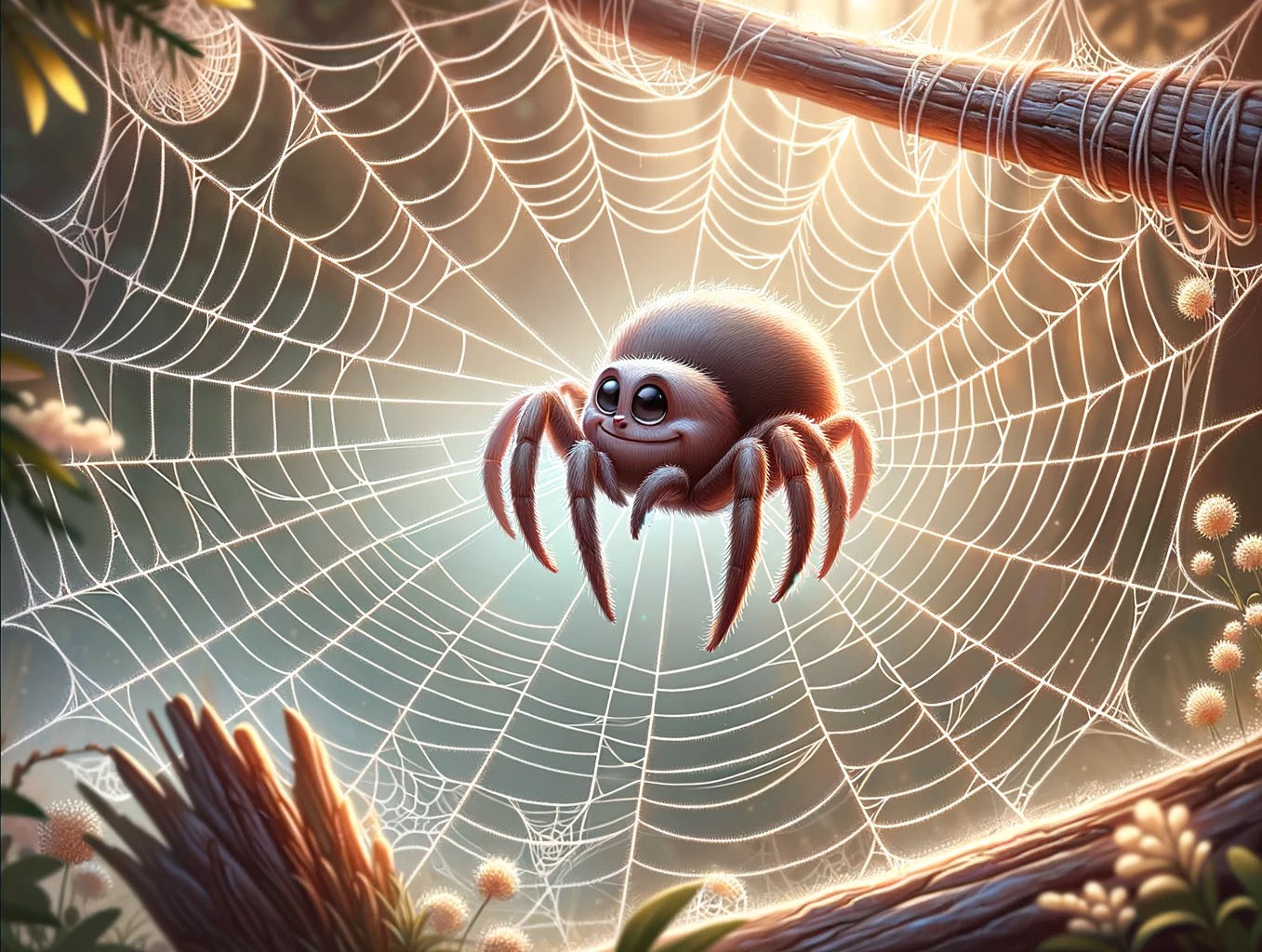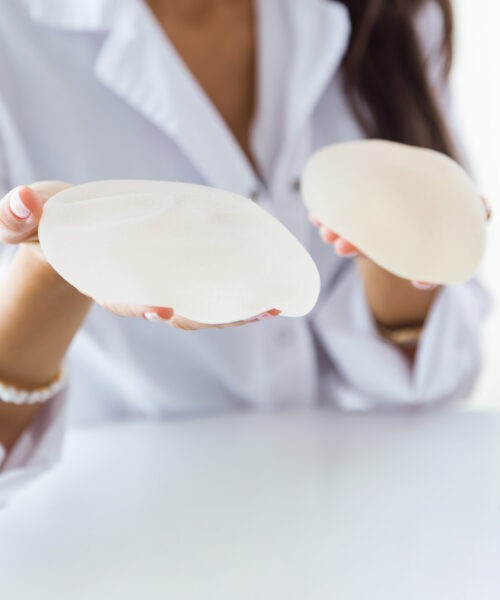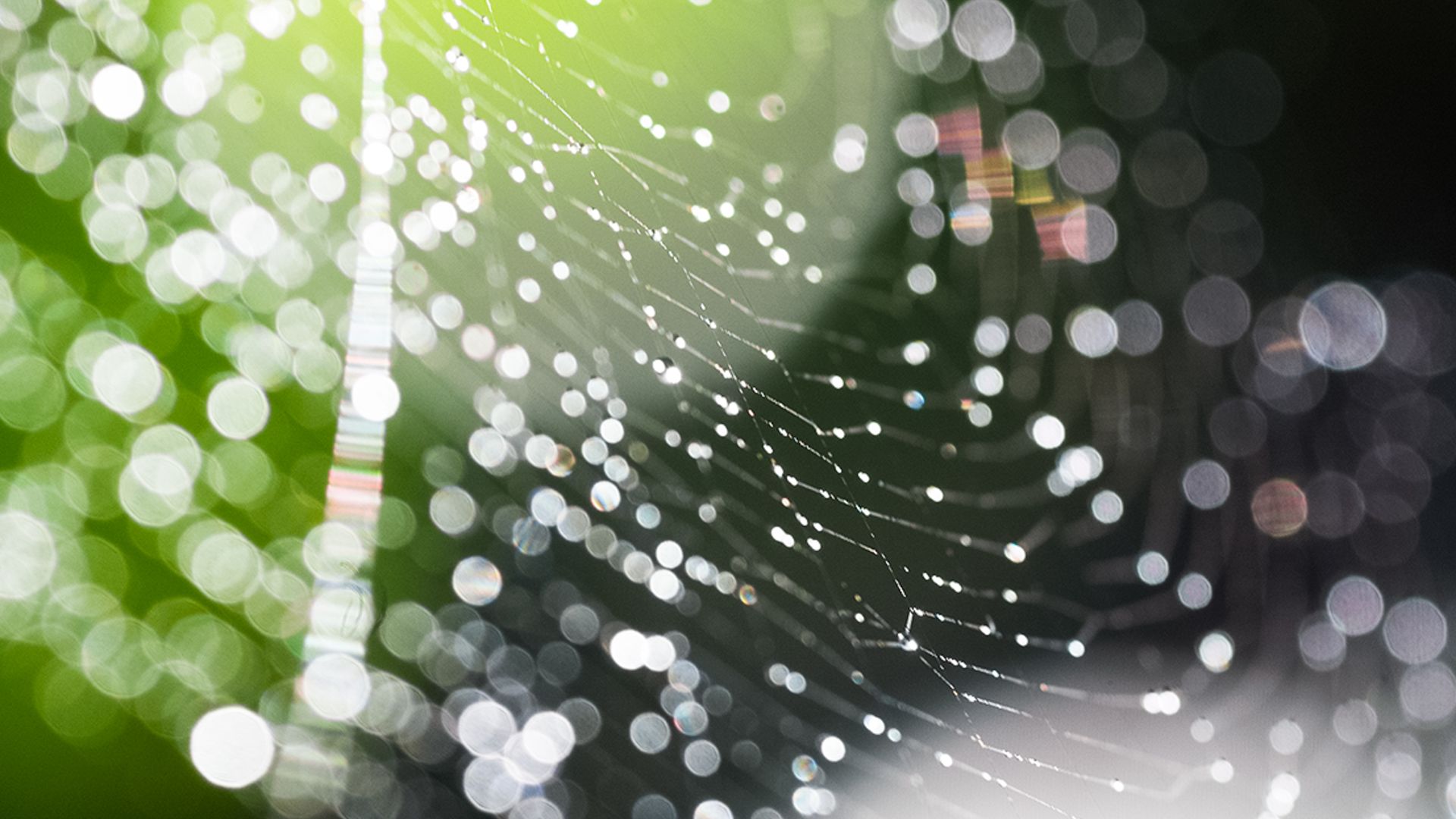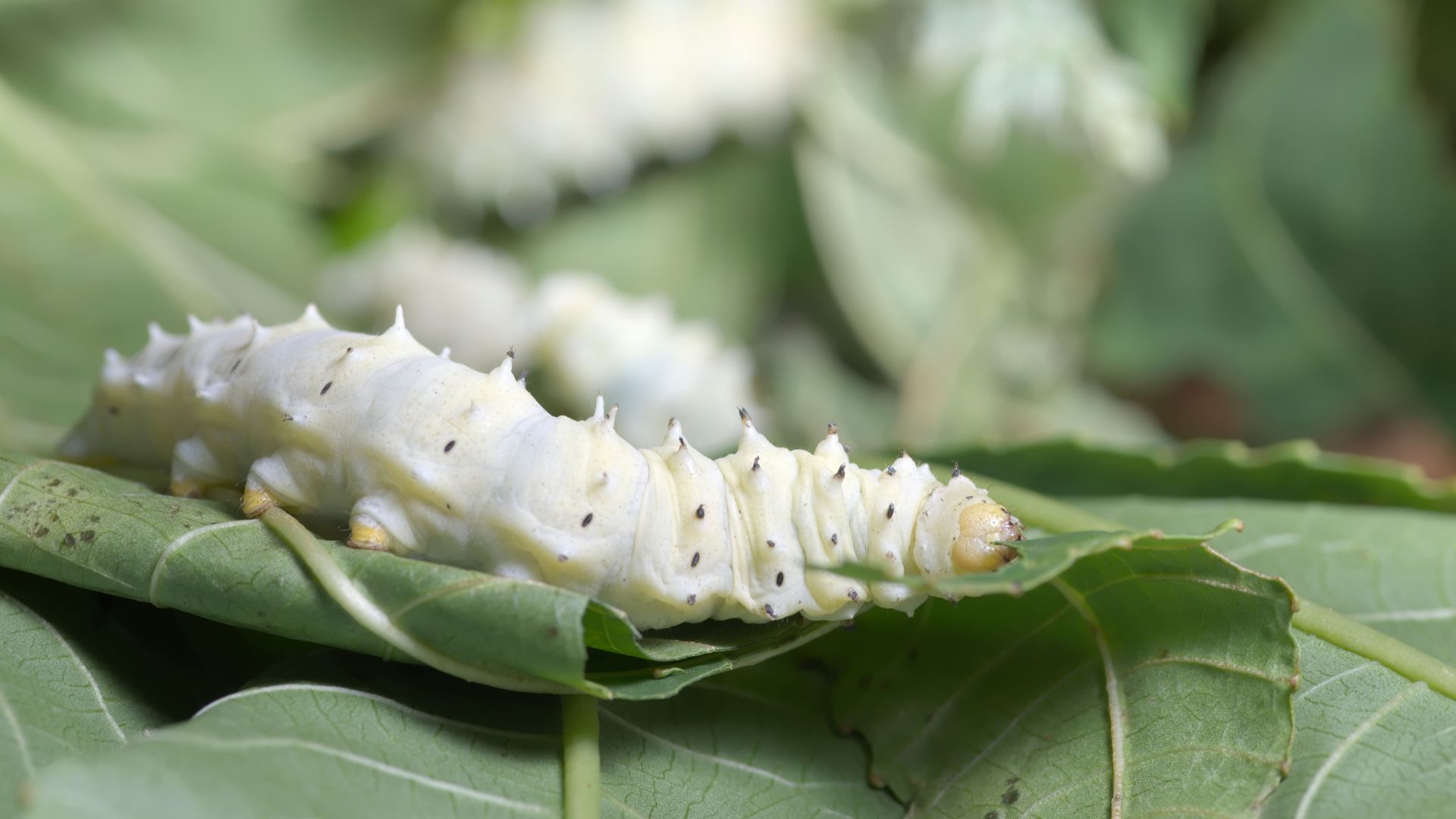Spider Silk is Woven Into the Future of Sustainability
Unraveling the threads of history and technology, explore how spider silk is spinning a new era of sustainable innovation and ecological harmony
[DALL-E]
Often referred to as nature-inspired innovation or bio-inspired design, biomimicry draws inspiration from the natural world to solve problems and power scientific advancement, specifically from the remarkable structures, processes, and systems found in living organisms and ecosystems. By observing and imitating nature's designs, biomimicry seeks to develop novel solutions for a range of human challenges, from engineering more efficient materials and products to designing sustainable and environmentally friendly technologies. This approach recognizes that billions of years of evolution have equipped living organisms with finely tuned adaptations, and by harnessing these blueprints, scientists and engineers can create solutions that are not only efficient but also often more sustainable and harmonious with the natural world. Biomimicry exemplifies the power of learning from the incredible diversity of life on Earth, and one of the best examples of this lies in the humble spider.

Fascination more often gives way to fear when it comes to spiders, and these misunderstood arthropods frequently find themselves thrown out the nearest window or, even worse, squished on the bottom of a shoe. However, these tiny creatures are capable of far more than they are given credit for. From their intricate webs to their needle-like fangs, spiders are masters of strength and precision. These natural innovations are now finding their place as inspiration for new materials. Driving this trend is the emergent field of biodesign, which seeks to harness the intricacies of biological systems as solutions to global challenges. Biodesign is a key track at this year's Global Synthetic Biology Conference, where you can hear more from leaders in this groundbreaking field.
A Thread Through History: Ancient Uses of Spider Silk
Spiders possess many valuable characteristics. However, the most notable is undoubtedly their silk. Strong yet elastic, spiders make good use of this natural gift, which is entangled with all phases of life. Protective silk cocoons envelop bundles of eggs before young spiders emerge, exploring the new world using dragline silk as a safety tether, while glistening webs trap unsuspecting prey before they are wrapped in a silk shroud and devoured. This material makes spiders the formidable predators they are, and its extraordinary properties are certainly not breaking news. Thousands of years ago, the ancient Greeks and Romans used spider silk in wound healing, and webs have long been used by Indigenous people in the Solomon Islands as fishing lures. Attempts to weave fabric from spider silk date back to 1709, resulting in some flimsy stockings and an unfriendly-looking contraption to harvest silk directly. More recently, a golden cape was created from golden-orb weaver silk, the culmination of the work of eighty-two people and over a million spiders over four years. This 11-by-4-foot textile, finished in 2009, is the largest known piece of spider silk cloth to date.

Despite such a long-held fascination, mass production of the material remained elusive. This is down to several key barriers. Firstly, close proximity and mass farming are impossible; Spiders are pointedly not social—in fact, considering the cannibalism that most species partake in, they could be regarded as decidedly antisocial. Once you get past the infighting, the effort and input required to produce a useable quantity is immense, as exemplified by the golden cape mentioned earlier; spider silk is ten times finer than silkworm threads, meaning that just one square yard of silk requires approximately 400 spiders.
Spider Silk in Modern Innovation
Regardless, humans remain unfazed and determined to harness this elusive concoction, leading to numerous innovations towards efficient and scalable production of spider silk for a variety of applications. A key breakthrough in this challenge was the application of recombinant DNA technology. From E. coli to goats, a plethora of potential sources of spider silk proteins have been explored. As a well-established practice and a veritable force in countless industries, the age-old art of fermentation holds particular allure. AMSilk, a German company founded in 2008, uses recombinant bacteria to produce spider silk proteins, which can then be spun into useable fibers, ground into powders, or otherwise made into a variety of other formats. “We can now finally copy and use a very powerful and versatile material that nature has developed over millions of years,” stated Isabel Rosenberger, Senior Manager Marketing & Communications at AMSilk.

Its unique properties are not the only benefit of spider silk. “Our materials not only meet the performance needs of our customers but also help them to achieve their sustainability goals, as our silk formulations do not contain any petroleum-based raw materials or substances of animal origin and are recyclable and biodegradable at the end of their life cycle, leaving no microplastics behind,” Rosenberger explained. This is all achieved by feeding the silk-producing microbes sustainably sourced plant-based raw materials. The end product, protein, is inherently biodegradable while still being fit for use in a wide range of settings, even before being transformed into thread. “AMSilk is already using [the proteins] in apparel, automotive interiors, medical applications, and household products, among many other potential use cases,” stated Rosenberger. A little downstream, the silk proteins can be wet-spun into AMSilks proprietary Biosteel® and Ultrafine Fibers, which can be processed into fabric using standard textile manufacturing equipment. Offering molecular-level customization, these next-generation materials have already formed the basis for several collaborations with giants such as Adidas and Airbus. And this is just the beginning—a recent partnership with 21st.BIO, a leader in bioproduction, promises to accelerate the production of AMSilks spider silk-based proteins to meet industrial-scale demand.
Weaving Tomorrow: The Future of Spider Silk Applications
While AMSilk has zeroed in on the production of silk proteins themselves, Spintex, the most recent of a series of spin-out companies from the Oxford Silk Group at Oxford University, has been focused on refining the spinning process. “It is very much fundamentally how the energy to create the thread is put into the material,” emphasized Alexander Greenhalgh, Spintex CEO and co-founder. In nature, spiders pass soluble silk proteins through their silk-spinning organs (spinnerets), extracting excess water and applying shear forces to produce solid threads. The type of forces applied are essential to natural fiber formation and its strength and extensibility, so mimicking this process is an essential task in the quest to achieve the exceptional properties of natural spider silk in synthetic production settings. “The proteins, as they are being pulled, are actually being stretched out, and that allows them to align against each other and get the best level of bonding,” Greenhalgh explained. “it's also very important to the overall properties of the fiber itself.” The production of silk fibers by Spintex emulates the natural process as closely as possible, resulting in a highly sustainable production process. Performed at room temperature, with only water as a byproduct, this process is 1000x more energy efficient than synthetic plastic fiber production, in addition to its consumable inputs deriving from plant sources.
Strongly focused on sustainable textile production, Spintex sees a future in which spider silk finds a firm foothold in our wardrobes, replacing not only luxury fabrics such as traditional silk but other fabrics too. The promise of a diverse array of energy-efficient and biodegradable fabrics is a tantalizing prospect for the fashion industry, a domain which, being responsible for around 10% of global carbon dioxide emissions, would certainly benefit from a boost of sustainability. Around 100 billion new garments are produced every year, 60% of which are synthetic. Not only do these fabrics take an astounding amount of fossil fuels to produce, but they also release an estimated 35% of the microplastic pollution in the world’s oceans and contribute to the majority of waste in landfills, according to the EPA. These issues would be eliminated with 100% bio-based fibers. However, natural fibers have their own drawbacks. “Bio-based materials, [including] silk, wool and cashmere [...] have many benefits in terms of longevity and end of life. They will degrade in the environment, they don't shed any microplastics, they have all kinds of advantages, but when we look at how much energy it actually takes to create them, they start to look less environmentally secure,” stated Greenhalgh. “If you can address the sustainability of producing [bio-based fibers], they become much more viable as true environmentally friendly textiles for clothing.”
With the sustainability of bio-based fibers and the low energy costs and elasticity of synthetic fibers, spider silk could very much be the savior the fashion industry needs. In pursuit of this vision, Spintex is on the market for a major scale-up. “We've solved most of the technological challenges in the process. What we are looking at now [...] is the engineering challenge,” Greenhalgh explained. Currently, in the fundraising phase, the company has plans to expand production with larger machines in greater numbers to supply more silk in less time.
Being composed of 100% protein, these products are not only biodegradable but can also be applied to further downstream applications. This cradle-to-cradle approach underpins the eco-friendly endeavors of Seevix, a spider silk company founded in 2014 with the aim to create “a new bio-material that will contribute to climate solutions in an ecologically challenged world,” as described by Shlomzion Shen, the company’s CEO, and founder. Shen hopes to cut down on the waste generated by the many industries to which spider-inspired materials can be applied. “Some 22 billion pairs of shoes are thrown away every year, and on average, it takes between 30-40 years for just one pair to decompose,” stated Shen. “Our SVX biopolymer is eco-friendly, meaning it decomposes into eco-friendly proteins, which can then be used, for example, as fertilizer.”

Seevix uses bacteria engineered with a patented sequence to produce spider silk-inspired proteins to be spun into threads using a process that replicates the spontaneous self-assembly of natural spider silk. Similarly to Spintex, Seevix also credits this process as a critical component to creating a product with the superior natural properties of spider silk in a sustainable way. “Our spontaneous self-assembly process generates an entirely unique product, and our downstream process saves energy and time without the need for column chromatography or filtration processes,” explained Shen. With a previously announced partnership with ASICS, their SVX biopolymer is well on its way to commercialization, although their vision doesn’t stop at consumer products. “We believe that our SVX biopolymer is also applicable to a host of other industries, including aerospace, automotive, textiles, defense, packaging, and construction,” stated Shen. With a promise of SVX-based products hitting the market as soon as this year, it won’t be long before we see this material in action.
While several companies are unraveling the intricacies of the natural spider silk spinning process, there is another company taking a different approach. Kim Thompson, CEO and founder of Kraig Biocraft Laboratories started as a trial lawyer but made a major jump to the world of biotechnology when he founded the company with the aim of streamlining the process of spider silk production. At that time, the now-defunct company Nexia was taking the spider silk world by storm with its genetically engineered dairy goats that produced spider silk proteins in their milk. “I felt this was misdiagnosing the problem. It was as if someone wanted to produce a big custom house, and what they did is they ordered a large pile of brick and had them dumped on the front lawn,” Thompson explained. “[...] What we didn't know was how to take the bricks and assemble them together in order to make a cohesive product that had any recognizable mechanical properties. I recognized this problem immediately and began thinking about how to solve it.” That solution came in the form of a tiny animal already cultivated en masse in Asia: the silkworm. Silkworms have already mastered the art of spinning silk, and the art of sericulture (the cultivation of silkworms to farm silk) has been practiced for more than 5000 years. By going back to the roots of silk production, Thompson hopes to bring this sustainable ‘super-material’ to the public sooner rather than later in the most cost-effective way possible.

For some, this may not be an ideal solution — as with traditional silk, this production method is not vegan. A key element to many other companies' approaches to spider silk marketing is the lack of any animal involvement, so this approach initially seems counterintuitive from a marketing perspective. However, so far, this does not seem to be a problem for Kraig Biocraft Laboratories. “There are processes in which you can do this without harming the silkworm at all, and it still emerges and continues [its] life cycle.[...] a very natural process has been carried on in Asia, in domestic production for thousands of years, and in the wild, of course, for countless millennia.” With production ramping up, there is still the potential for a surplus of silkworms and silk moths. However, there is a new, sweeping trend that just so happens to align perfectly with this approach. “The world seems to be moving towards eating bugs,” Thompson suggested. With many claiming insects are the protein of the future, silkworms could very well end up being the sustainable snack of the future, leaving Kraig Biocraft Laboratories’ silk production practically byproduct-free. Thompson hinted at a busy next few years for Kraig Biocraft Labs. “We're ramping up dragon silk and something else we call monster silk. Those will be the first big commercial products that will reach tens of metric tons of production.” And some even more advanced materials, including pure spider silks, seem to be on the horizon. “If I have my way, early 2025 is going to be very exciting for what we can roll out in terms of new molecular designs.”
Although there have been a number of innovations inspired by spiders over the years, many companies have either dropped out of the public sphere or completely eliminated spiders from their marketing. The public image of spider silk and its exemplary characteristics may explain why. “I think it's not so much to do with the public doesn't accept that term as a branding term, for example. I think it has to do with their confidence in whether their material can really stand up to the challenge, seeing these properties,” Thompson stated. The revered properties of spider silk are difficult to emulate, and with such high praise comes high expectations. A true spider silk replica remains beyond our grasp, and as Greenhalgh said, “Spider silk is at the very edge of what natural materials can achieve. There is still so much that we don’t know.” However, the work that has been done despite this lack of full understanding is a true testament to the power of innovation. The sustainable, strong, and flexible fabrics that have reached the market so far offer a glimpse into a better future for fashion, medicine, and defense, all inspired by the ingenuity of our small 8-legged friends. “ A close look under an electron microscope reveals SVX’s astounding architecture, which human beings could never generate or even envision without the help of nature,” stated Shen, crediting nature as a driving force behind Seevix’s signature biopolymer.

Biomimicry and Beyond: Embracing Nature’s Ingenuity
With our increasing ability to manipulate biological systems at will, the perceived link between these technologies and the natural world can become increasingly stringent. Synthetic biology already contends with a public fear of the ‘unnatural, ' and conversely, an anthropocentric approach to innovation can cloud the solutions hiding in nature. Embracing biomimicry and celebrating the natural muses for scientific advancement can bring humanity closer to nature and highlight the humble roots of many scientific advances. An appreciation for the natural world emphasizes evolution as a problem solver and brings visibility to species, which may hold the key to the next big breakthrough. ‘When you can see that there's an example of something in nature, it tells you that it's possible, even if we don't know how to do it right now,” Greenhalgh stressed.
Although mainstream coverage of spider silk production has dropped off in recent years, it is clear that this is not a market to lose sight of. We can expect some exciting advances very soon from the companies proudly flaunting their arachnid heritage as their hard work comes to fruition as higher-scale ventures and consumer products. Despite the challenges and uncertainties in replicating the intricate properties of natural spider silk, the progress achieved thus far underscores the power of innovation, persistence, and biomimicry. Tumultuous as it may have been, the journey of spider silk from the back garden to a promising next-generation biomaterial demonstrates the potential for bio-inspired solutions to tackle pressing human challenges.

















